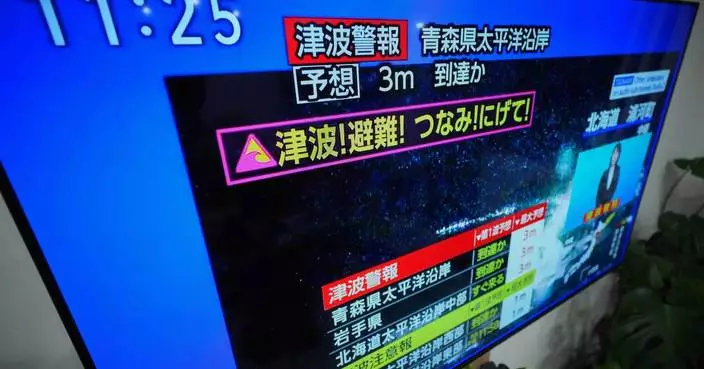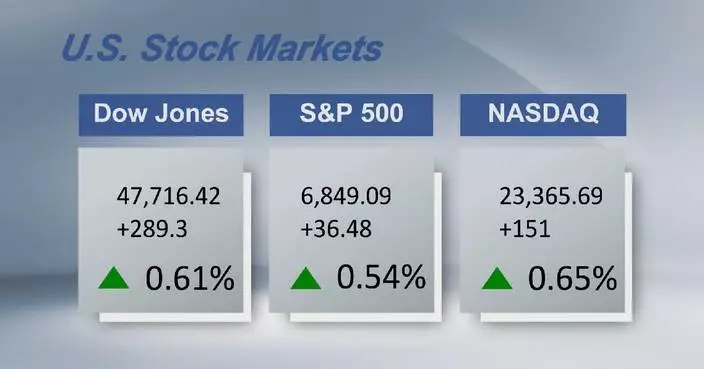Feature · News
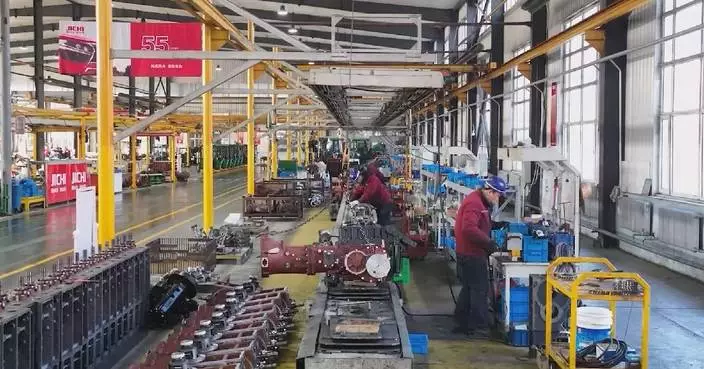
China advances agricultural machinery innovation to boost grain production

China to prioritize high-quality development of marine economy

No New Chikungunya Cases in Hong Kong; Tsing Yi Trails Closed for Mosquito Control Efforts
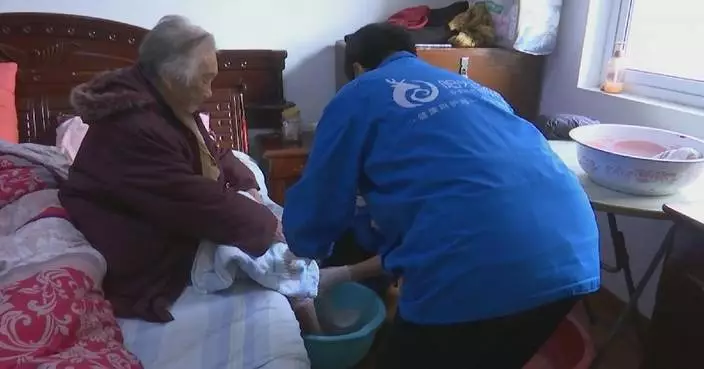
China commits to building full-chain system for ensuring people's livelihood

Taiwan compatriot shares ancestors' stories on Nanjing Massacre Memorial Day
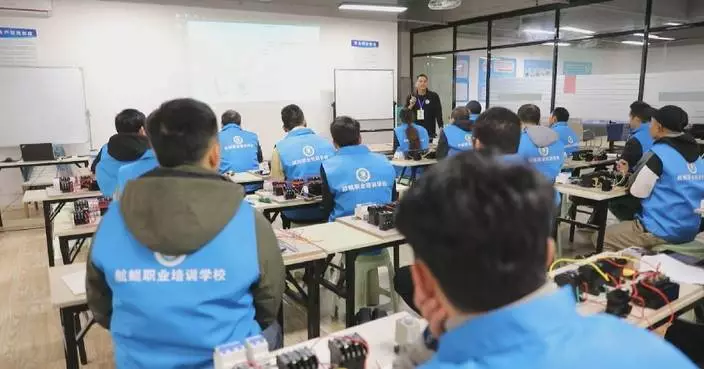
China to further stabilize employment, improve social security

BP China Insight : NYT : Trump Isn’t Fighting a Cold War with China—He’s Waging a Civil War
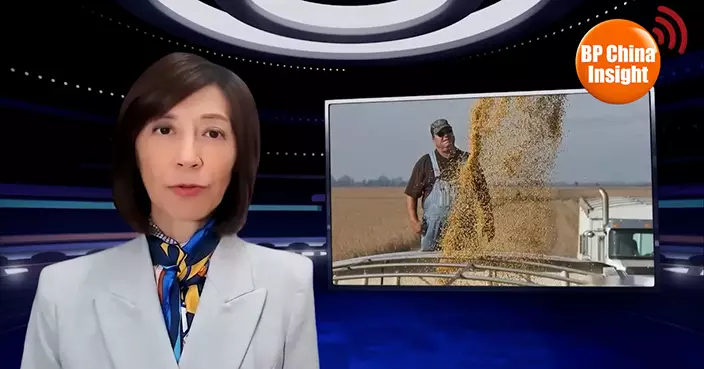
BP China Insight : Goldman Sachs: China Effectively Reducing Soybean Import Dependence
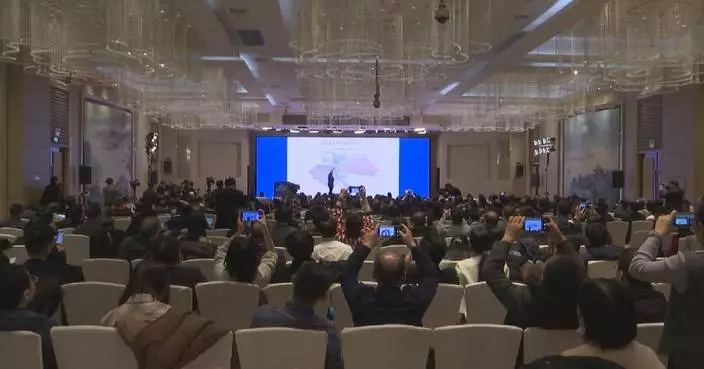
China remains largest driver of world economic growth: official

Int'l guests call for remembering history at China's national event honoring Nanjing Massacre victims

China makes breakthrough in deep-water reef limestone oil extraction

Taiwan’s historical epic uncovers Japan’s atrocities during colonial rule

Iraqi economists hail outcomes of China's annual central economic work conference

Transitional housing projects support Tai Po fire survivors
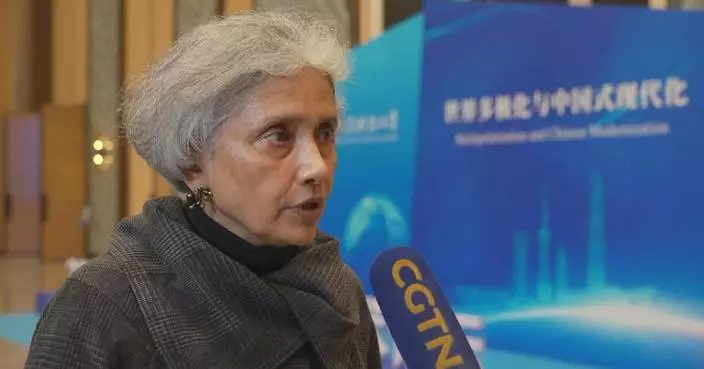
China's vision for a multipolar, inclusive world draws praise from global scholars

China's AI industry scale set to hit 1 trln yuan in 2025

BP China Insight : NYT : Trump Isn’t Fighting a Cold War with China—He’s Waging a Civil War

BP China Insight : Goldman Sachs: China Effectively Reducing Soybean Import Dependence
China remains largest driver of world economic growth: official
Int'l guests call for remembering history at China's national event honoring Nanjing Massacre victims
China advances agricultural machinery innovation to boost grain production
China to prioritize high-quality development of marine economy

No New Chikungunya Cases in Hong Kong; Tsing Yi Trails Closed for Mosquito Control Efforts
China commits to building full-chain system for ensuring people's livelihood
Taiwan compatriot shares ancestors' stories on Nanjing Massacre Memorial Day
China to further stabilize employment, improve social security
China makes breakthrough in deep-water reef limestone oil extraction
Taiwan’s historical epic uncovers Japan’s atrocities during colonial rule
Iraqi economists hail outcomes of China's annual central economic work conference
Transitional housing projects support Tai Po fire survivors
China's vision for a multipolar, inclusive world draws praise from global scholars
China's AI industry scale set to hit 1 trln yuan in 2025
Feature·Bloggers

【InsightSpeak】From Confrontation to Consensus: A New Bearing for Hong Kong’s Democratic Practice

【InsightSpeak】The executive–legislative relationship under a new electoral culture

【What Say You?】Trump and Starmer Barely Bother with Jimmy Lai – Just Lip Service to Check the Box

【Ariel】9 Arrested for Illegal Drills: Tai Po Fire Lurkers Ready to Strike

【Mark Pinkstone】The return of Roach and his poisoned tongue

【What Say You?】UK Agitators Hijack Grief: The "Triplet" Protest Strategy

Israel's Netanyahu lashes out while world shows shock and sympathy over Australia shooting
- The Latest: A person is in custody after deadly Brown University shooting leaves 2 dead, 9 wounded
- Person of interest detained in Brown University shooting that killed 2 and wounded 9
- Chile holds an election that could deliver its most right-wing president since dictatorship
- Mass shooting at Jewish event on Bondi Beach follows rising antisemitism in Australia
- Gunmen kill at least 11 people in attack on Hanukkah celebration on Sydney's Bondi Beach
- Nobel laureate Ales Bialiatski tells AP of Belarus prison ordeal in first interview after release
- Bystander shown in videos disarming gunman during Australian beach shooting commended for bravery
- Zelenskyy offers to drop NATO bid for security guarantees but rejects US push to cede territory
- Attacker who killed US troops in Syria was a recent recruit to security forces, official says
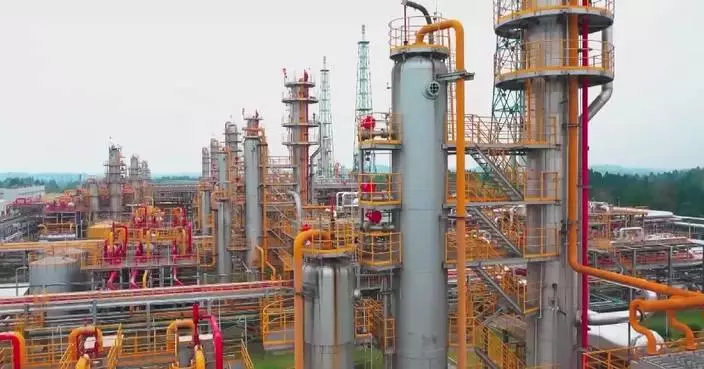
China to see gas output hitting 300 bcm by 2030: report
- 12 killed in mass shooting at Sydney's Bondi Beach
- Closure of Poipet border crossing leaves many stranded amid clashes
- Spring Festival Gala logo, theme light up on landscape buildings across China
- Chinese mainland's film ticket sales in 2025 exceed 50 billion yuan
- Guangdong promotes bird-friendly netting to protect migratory birds, farm fields
- Archaeologists discover wide variety of cultural relics from Luojiahe Site in Shaanxi
- South China's Guangxi sees 10-pct growth in trade with ASEAN in Jan-Nov period
- China to further develop embodied intelligence with focus on robots' learning ability
- Prehistoric grain storage pits discovered in northwest China

From hoops to oysters: Inside the unexpected second acts of WNBA stars
- Like many holiday traditions, lighting candles and fireplaces is best done in moderation
- Morocco aims to boost legal cannabis farming and tap a global boom
- Jury says Johnson & Johnson owes $40 million to 2 cancer patients who used talcum powders
- Official streaming platform for the Games of the Future Abu Dhabi 2025 powered by ADNOC launches ahead of opening competition
- SmallRig and FamilyLens Launch Global Family Filmmaking Initiative at 3rd FamilyLens International Film Festival
- SEAX Global Acquires Major Stake in Interlink Telecom to Accelerate ASEAN Expansion
- HiTHIUM Launches Three Breakthrough Innovations at Its Third Eco-Day, Unlocking an Intelligent Future with Long-Duration Energy Storage
- M7 World Championship unveils first Opening Ceremony, tournament draw, and M7 Pass—elevates Indonesia on global stage
- Ohio State’s Caleb Downs Named 2025 Paycom Jim Thorpe Award Winner

Humanoid robots take center stage at Silicon Valley summit, but skepticism remains
- Winter virus season so far is not too bad, but doctors worry about suffering to come
- Ford turns to stepped-up tech and cooperation with police to thwart F-150 pickup thieves
- A Chinese whistleblower now living in the US is being hunted by Beijing with help from US tech
- Appeals court backs contempt finding against Apple, but reopens a door for iPhone app fees
- Disney invests $1B in OpenAI in deal to bring characters like Mickey Mouse to Sora AI video tool
- These are the key AI players on the cover of Time's 'Architects of AI' magazine
- Open AI, Microsoft face lawsuit over ChatGPT's alleged role in Connecticut murder-suicide
- NASA loses contact with its Maven spacecraft orbiting Mars for the past decade
- Professor Youmin Xi honoured with University of Liverpool Fellowship

Hallmark holiday movie fans are flocking to Connecticut's quaint filming locations
- Haruki Murakami honored with awards and a jazzy tribute in New York
- Egypt reveals restored colossal statues of pharaoh in Luxor
- Amy Schumer says she and her husband have decided to end their marriage
- Affable comedy acting legend Dick Van Dyke turns 100 years old
- Hailee Steinfeld and NFL husband Josh Allen are expecting their first child
- Meet the Indigenous women behind Mexican President Claudia Sheinbaum's 'most stylish' looks
- Oscar winner Morricone’s lost opera debuts in Naples after 30 years
- Bestselling British writer Joanna Trollope dies at 82
- It feels good to be Jelly Roll. And now, he's ready to win a Grammy

Chiefs' Xavier Worthy being evaluated for concussion after head injury against Chargers
- Kane rescues Bayern from slipping to first Bundesliga defeat of the season against last-placed Mainz
- Man City and Aston Villa win to stay in touch with Premier League leader Arsenal
- Veteran pitcher Merrill Kelly returns to Diamondbacks on a $40 million, 2-year deal, AP source says
- No trophy for Nancy as Celtic falls to shock defeat to St. Mirren in Scottish League Cup final
- India beats South Africa by 7 wickets to take 2-1 lead in T20 series
- Michigan search includes Arizona State's Kenny Dillingham, Missouri’s Eli Drinkwitz, AP source says
- TJ Watt is basically irreplaceable for the Steelers. Nick Herbig and Jack Sawyer are ready to try
- Milan draw and Napoli loss could see Inter end the round on top if it wins at lowly Genoa
- New Zealand skier Alice Robinson wins World Cup super-G; Lindsey Vonn 4th

Hong Kong Hosts Successful Conclusion of National Games for Persons with Disabilities and Special Olympic Games
- Government Task Forces Mobilize Support and Relief Efforts for Wang Fuk Court Fire Victims in Tai Po.
- HKU Team Tracks Superbug Genes Across Hong Kong Waters
- Digging deep to overcome obstacles
- Free Chinese Medicine Consultations Available for Residents Affected by Tai Po Fire Starting December 15
- New Vehicle Registration Rules Take Effect December 22: Owners Responsible for Unlicensed Vehicles
- Central Kowloon Bypass Yau Ma Tei Section Opens December 21, Reducing Travel Time to Kowloon Bay to Five Minutes
- Government Task Forces Mobilize $3.7 Billion Fund for Wang Fuk Court Fire Relief Efforts
- Hong Kong Reports No New Chikungunya Cases, Tsing Yi Trails Closed for Mosquito Control Efforts
- Hong Kong Launches GoGlobal Platform to Support Mainland Enterprises in Global Expansion
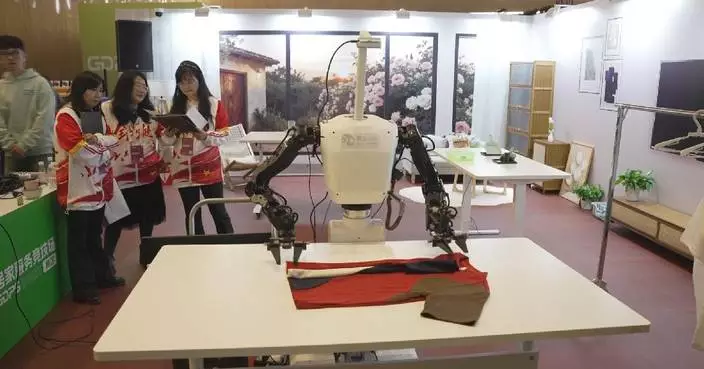
Embodied AI contest to promote AI application in daily life: insiders
- Xinjiang's desert-edge farmlands become winter paradise for migratory birds
- EU Chamber of Commerce sees renewed potential in Hainan after special customs operation
- China's Haiji-2 deepwater jacket platform boasts multiple world-leading technologies
- Desert giant reed brings ecological, economic gains in Xinjiang's Tumxuk
- Int'l experts hail China's economic resilience with high-quality development
- HK property developer praises government's efficient rehousing efforts after fire
- China's high-speed trains lead domestic, global rail transport innovation
- Japan's LDP faces fresh scrutiny over misuse of political funds: report
- Chinese diplomats in Philippines pay tribute to martyrs in anti-Japanese aggression war
Category · News

Israel's Netanyahu lashes out while world shows shock and sympathy over Australia shooting

The Latest: A person is in custody after deadly Brown University shooting leaves 2 dead, 9 wounded

Person of interest detained in Brown University shooting that killed 2 and wounded 9

Chiefs' Xavier Worthy being evaluated for concussion after head injury against Chargers

Kane rescues Bayern from slipping to first Bundesliga defeat of the season against last-placed Mainz

Chile holds an election that could deliver its most right-wing president since dictatorship

Man City and Aston Villa win to stay in touch with Premier League leader Arsenal

Mass shooting at Jewish event on Bondi Beach follows rising antisemitism in Australia

Veteran pitcher Merrill Kelly returns to Diamondbacks on a $40 million, 2-year deal, AP source says

No trophy for Nancy as Celtic falls to shock defeat to St. Mirren in Scottish League Cup final

Gunmen kill at least 11 people in attack on Hanukkah celebration on Sydney's Bondi Beach

Nobel laureate Ales Bialiatski tells AP of Belarus prison ordeal in first interview after release

Bystander shown in videos disarming gunman during Australian beach shooting commended for bravery

Zelenskyy offers to drop NATO bid for security guarantees but rejects US push to cede territory

India beats South Africa by 7 wickets to take 2-1 lead in T20 series

Attacker who killed US troops in Syria was a recent recruit to security forces, official says
China to see gas output hitting 300 bcm by 2030: report

As gerrymandering battles sweep country, supporters say partisan dominance is 'fair'

Michigan search includes Arizona State's Kenny Dillingham, Missouri’s Eli Drinkwitz, AP source says

TJ Watt is basically irreplaceable for the Steelers. Nick Herbig and Jack Sawyer are ready to try

Milan draw and Napoli loss could see Inter end the round on top if it wins at lowly Genoa
12 killed in mass shooting at Sydney's Bondi Beach
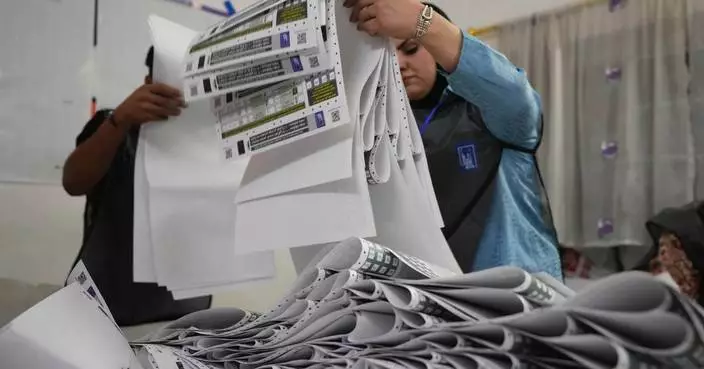
Iraq's election result ratified by Supreme Federal Court as premiership remains up for grabs

Hamas confirms the death of a top commander in Gaza after Israeli strike

Hong Kong Hosts Successful Conclusion of National Games for Persons with Disabilities and Special Olympic Games

Mass shootings are rare in Australia. Here is a look at some previous attacks

From hoops to oysters: Inside the unexpected second acts of WNBA stars

Photos show waterlogged Washington state in US
Closure of Poipet border crossing leaves many stranded amid clashes
Spring Festival Gala logo, theme light up on landscape buildings across China
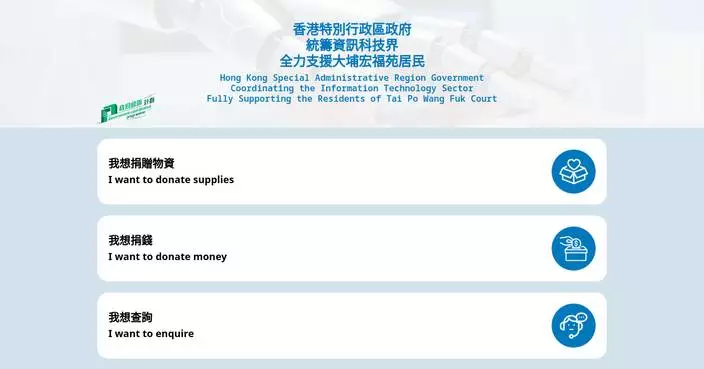
Government Task Forces Mobilize Support and Relief Efforts for Wang Fuk Court Fire Victims in Tai Po.
Chinese mainland's film ticket sales in 2025 exceed 50 billion yuan

New Zealand skier Alice Robinson wins World Cup super-G; Lindsey Vonn 4th

Hallmark holiday movie fans are flocking to Connecticut's quaint filming locations

Haruki Murakami honored with awards and a jazzy tribute in New York
Guangdong promotes bird-friendly netting to protect migratory birds, farm fields

Photos show the scene of a deadly attack on Sydney's Bondi Beach

Norwegian skier Timon Haugan wins Val d'Isere slalom
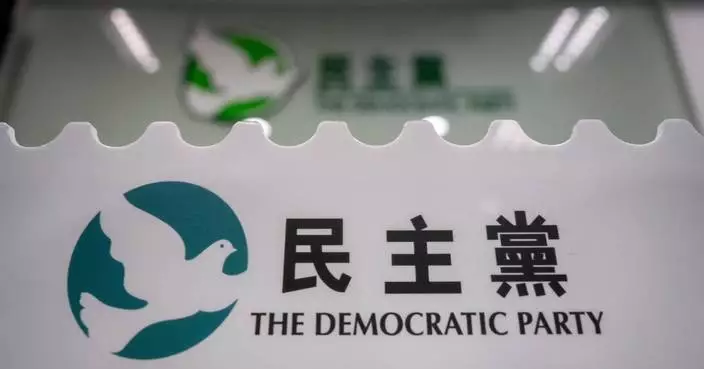
Hong Kong's biggest pro-democracy party votes to disband after more than 30 years of activism

Another blue wave? Meet the Democrat trying to make it happen and the Republican trying to stop her

Arctic air mass pushes to the U.S. South; Midwest also bracing for dangerous wind chills

Myanmar calls on countries to take back citizens held in crackdown on scam centers

Egypt reveals restored colossal statues of pharaoh in Luxor

Pope criticizes prison overcrowding during special Mass for inmates, guards and families

What to know about the US military's role in Syria after deadly IS attack

Like many holiday traditions, lighting candles and fireplaces is best done in moderation

Thailand says Cambodian rocket fire has caused its first civilian death in new border fighting

Archaeologists discover wide variety of cultural relics from Luojiahe Site in Shaanxi
China to further develop embodied intelligence with focus on robots' learning ability
South China's Guangxi sees 10-pct growth in trade with ASEAN in Jan-Nov period
Prehistoric grain storage pits discovered in northwest China
Embodied AI contest to promote AI application in daily life: insiders
Xinjiang's desert-edge farmlands become winter paradise for migratory birds
EU Chamber of Commerce sees renewed potential in Hainan after special customs operation
Annual new energy power generation of China's Gansu exceeds 90 bln kilowatt-hours
China's Haiji-2 deepwater jacket platform boasts multiple world-leading technologies
Desert giant reed brings ecological, economic gains in Xinjiang's Tumxuk
Int'l experts hail China's economic resilience with high-quality development
HK property developer praises government's efficient rehousing efforts after fire
China's high-speed trains lead domestic, global rail transport innovation
IMF chief highlights "better than expected" 3.2 pct global growth forecast, urges reforms
China's first deepwater oilfield sees full operation in expanded sections
Japan's LDP faces fresh scrutiny over misuse of political funds: report
Chinese automaker Geely launches world's largest car safety test center
Chinese diplomats in Philippines pay tribute to martyrs in anti-Japanese aggression war
Focus on major metropolitan areas, county seats key to urban-rural integration: official
Embodied AI robots showcase skills in eight scenarios
Global companies see signals for continued investment in China
China's 42nd Antarctic Expedition team nears completing supply unloading surrounding Zhongshan Station
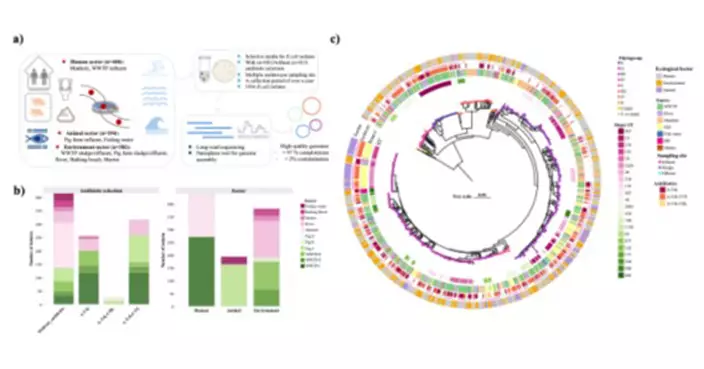
HKU Team Tracks Superbug Genes Across Hong Kong Waters
Candidates from opposite sides of political spectrum vie for Chilean presidency

Girls and women fleeing Mali describe sexual violence by Russian forces
Unit 731 archives reminds horrors of Japanese militarism, calls to cherish peace: official
Indonesia flood death toll exceeds 1,000

US women's hockey team beats Canada 4-1 in Edmonton to sweep Rivalry Series

Morocco aims to boost legal cannabis farming and tap a global boom

Morgan Frost scores in OT to lift the Flames past the Kings, 2-1
Chinese FM calls for pushing China-UAE comprehensive strategic partnership to higher level

A rarity: The Thunder lose. OKC falls to 24-2 after loss to San Antonio in NBA Cup semifinals
Testimony reveals Japan's germ warfare crimes in China

Wembanyama makes immediate impact, helps Spurs past Thunder and into NBA Cup final
Int'l experts express concern over Takaichi's erroneous remarks

Wembanyama's return lifts Spurs to NBA Cup final, handing Thunder just 2nd loss

Jalen Brunson's 40 points lead Knicks past Orlando Magic in NBA Cup




























